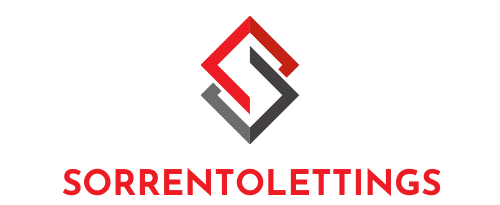What’s the Best Technique for Introducing a Dog to Nose Work Activities?

Nose work is an engaging, fun, and productive activity for you and your furry friend. It utilizes the dog’s natural scent detection ability, helping them to learn, grow, and stay mentally and physically stimulated. This article will guide you on how to introduce your dog to nose work activities effectively. Whether you have a playful puppy or an older dog seeking a new challenge, this activity will pique their interest and keep them entertained.
Unleashing the Power of the Canine Nose
Before embarking on scent games and nose work training, it’s imperative to understand the astounding olfactory prowess of dogs.
A lire également : How to Properly Trim the Feathers of a Flighted Parrot to Ensure Their Safety?
The canine sense of smell is extraordinarily powerful. To put it into perspective, while humans possess about six million olfactory receptors, dogs can have up to 300 million. This allows them to detect an array of scents which humans cannot. This is why dogs are often employed in search and rescue operations, drug detection, and even diagnosing human diseases.
Nose work activities harness this innate ability, turning it into a game that offers mental stimulation, builds confidence, and strengthens the bond between pet and owner.
Sujet a lire : How to Manage the Dietary Needs of a Corn Snake with Metabolic Bone Disease?
The Initial Stages: Associating Scent with Reward
The first step in introducing your dog to nose work is to create a positive association between a particular scent and a reward.
To start, choose a specific scent that will be easily recognizable for your dog. It could be a specific type of treat, a favorite toy, or even a piece of clothing with your smell on it. The American Kennel Club (AKC) recommends using three containers for this initial training. In one container, place the chosen scent along with a treat. The other two containers should be left empty.
Now, let your pet find the container with the treat using their nose. When they correctly identify the container, reward them with the treat. This step will create a positive association between the scent and the reward, encouraging your dog to seek out the scent in future training sessions.
Gradually Increasing the Challenge
Once your dog starts to understand the game and shows excitement in finding the treat, it’s time to gradually increase the challenge.
One way to do this is by introducing more containers or hiding spots, and placing them in various locations around the house. You can also start using different scents, or reduce the amount of reward to make the game more challenging. However, ensure that you adjust the difficulty incrementally to keep your dog interested and motivated.
Another way to challenge your dog is by changing the type of reward. Instead of always using treats, you can use a favorite toy or a game of fetch as a reward. This will prevent your dog from becoming reliant on food rewards and will also make the game more diverse and fun.
Nose Work Training in Different Environments
After your dog has mastered the game indoors, it’s time to take the training outside.
This step will introduce your dog to a plethora of new scents. The outdoors provides an array of olfactory stimuli – from the scent of other animals to plants and food. This will elevate the difficulty level of the nose work game, making it a robust training activity.
Start in a low-distraction environment like your backyard. As your dog becomes more proficient, you can increase the challenge by introducing nose work in areas with more distractions, such as a park or a busy neighborhood street.
Remember to always reward your dog for their hard work. This will motivate them to continue the game and will also solidify the positive association with scent detection.
The Benefits of Nose Work Activities
Engaging in nose work activities with your dog provides a myriad of benefits.
Nose work can help to build your dog’s confidence as they learn to navigate different environments and detect scents. It also provides an excellent source of mental and physical stimulation, which can help to reduce behavioral problems caused by boredom or lack of exercise.
Moreover, nose work strengthens the bond between you and your pet. It allows you to spend quality time together, engage in a fun activity, and work towards a common goal. Your dog will see you as a source of positivity and fun, which will ultimately strengthen your relationship.
In conclusion, nose work is a fun and engaging activity for you and your pet. By using their natural scent detection abilities and a system of rewards, you can turn a simple game into a robust and beneficial training activity. So why not start today and unlock the full potential of your dog’s amazing nose?
Scent Training: From Basic to Advanced Levels
Once your dog has a solid grasp on the foundational skills and has been introduced to the concept of nose work, the next step is to gradually progress to more advanced levels of scent training.
At this stage, training should focus on increasing the complexity of the tasks. Start by adding more containers or hiding places, making it more challenging for your dog to find the treat or toy. This could mean using a muffin tin to hide treats, which adds an extra level of difficulty as your dog must navigate the different compartments to find the scent.
Next, diversify the types of scents your dog is exposed to. You could start introducing scents associated with daily paws activities, like the smell of a leash, a favorite walking spot, or the scent of different dog breeds. The goal here is to teach your dog to distinguish between different scents, and to reward them for correctly identifying the target scent.
The environment in which the training takes place also plays a crucial role in scent work. By varying the locations of the training, you expose your dog to a wide range of smells and scenarios, thereby simulating real-world scent detection tasks. Begin with controlled environments like your backyard, and gradually progress to areas with more distractions, such as parks and busy streets.
Remember, the aim of this advanced training is not just to make the tasks harder, but to also make your dog more adaptable and skilled in scent detection. So, always be patient and maintain a positive, encouraging attitude during these training sessions.
Conclusion: A Rewarding Activity for You and Your Dog
In introducing your dog to nose work, you’re opening up a world of sensory exploration that taps into their unique and natural abilities. Not only does it provide mental stimulation and physical exercise, but it also builds their confidence, teaches them problem-solving skills, and strengthens your bond with them.
Nose work games are more than just training exercises; they’re also a great way for you to communicate with your dog and understand their world better. As your dog engages in scent work, they learn to trust their nose and instincts, leading to a boost in their overall confidence and independence.
Finally, remember that the goal of introducing your dog to nose work is not to create a professional scent detection dog, but to give them an enjoyable and stimulating activity that they can engage in daily. So, don’t rush the process or get frustrated with your dog’s pace of learning. Keep the sessions fun and positive, and you’ll soon see the benefits of this rewarding activity.
In essence, nose work is a versatile and beneficial activity that any dog can learn and enjoy. It’s a wonderful way to engage your dog’s sense of smell, keep them mentally stimulated, and strengthen your bond with them. With patience, consistency, and a positive attitude, you can unlock the incredible potential of your dog’s nose and transform their daily paws activities into fun and exciting scent games. So why wait? Start your nose work journey today, and watch your dog flourish!
